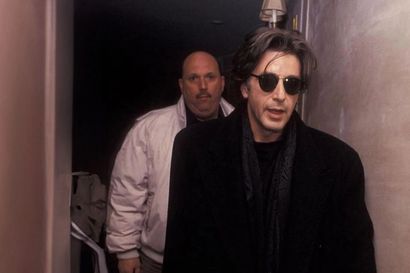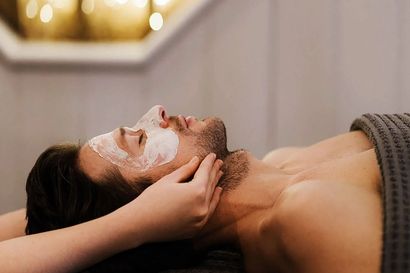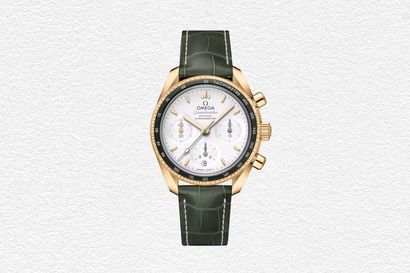Back in 2006, Daniel Craig emerged from the sea in Casino Royale wearing a pair of tight, sky blue La Perla Grigioperla Lodato trunks – and overnight men’s swimwear was being discussed and dissected in a way it never had been before. Formerly an item most men would just grab at the duty-free, James Bond had raised the stakes, and his combination of gym-fit body and slim-fit swimmers became the peak of desirability. Almost 15 years later, and the global men’s swimwear market is valued at around $4 billion – and is set to rise to $6.29 billion by 2025. It’s now not unusual for men to spend over £100 on a pair of swim shorts that may only get worn once or twice a year in the hope of looking as good as Bond on the beach. How did we get here and, more importantly, what’s the next wave going to look like?
Perhaps it’s not surprising that this new gold standard for men’s swimwear was crystallised on reel, rather than in real, life. While swimwear for men existed decades before Casino Royale (in its earliest iterations as flannel or wool onesies designed for modesty), from the 1920s the evolution of the studio system and the evolution of swimwear ran in parallel.

“The 1918 influenza pandemic made people prioritise their wellbeing. This sparked a change in swimwear, which began to show far more skin,” says Dr Benjamin Wild, lecturer at the Manchester Fashion Institute, Manchester Metropolitan University, and co-host of the Dress: Fancy podcast. “This helped to create the more streamlined, sexy silhouette we know today, and that Hollywood did much to promote on screen.”
However, the reason James Bond’s teeny tiny trunks became such a watershed moment almost a century later was also due to a perfect storm of new #menswear bloggers who were unabashedly interested in style and Savile Row suiting, as well as the first social media boom (it’s worth noting, Facebook hit one million users and Twitter went live in 2006). The internet gave more men access to information, inspiration and platforms where they could talk more openly about what they wanted to wear – including on the beach.
The next year, Adam Brown launched Orlebar Brown. Considered by many as the brand that jump-started an explosion of men’s luxury swimwear labels, Brown was moved to cut a new type of short for swimming when he experienced a moment of clarity while on holiday in India.
“I couldn’t get into lunch in a hotel I was staying at because of the swim shorts I was wearing,” says Brown. “So the founding idea was that I didn’t want a swim short, I wanted a short I could swim in.”
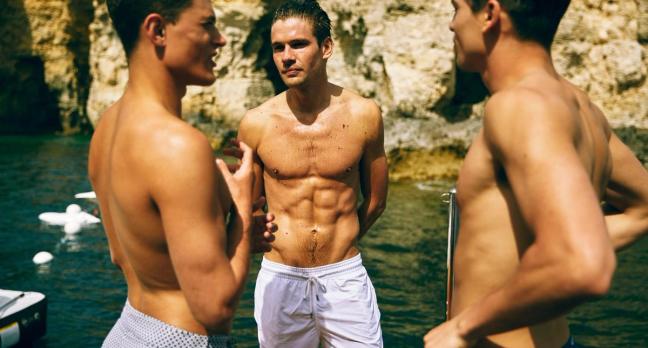
This idea was positively revolutionary given that, in the early 2000s, the only real options that existed for men were baggy board shorts or budgie smugglers from sports brands. No longer a teenager, a 40-year-old Brown wanted neither of these. He wanted something smarter – and, with men taking a new interest in their appearance, he assumed others would feel the same.
“I thought, a man doesn’t wear chinos or jeans with an elasticated waistband, so why does that change when he goes to the beach? For any man with any body shape, having something that’s tailored is ultimately more flattering.”
With that in mind, the first 1,000 pairs of Orlebar Brown’s now-legendary swimmers were created. Priced at a punchy £130, these shorts were considered expensive in comparison to others that were available at the time, but they were also far more – well – considered. They were made from 60 different elements and based on the cut of tailored Savile Row trousers, with adjustable side tabs, high-quality metal hardware (most notably, a working fly), durable, comfortable fabric, a leg that skimmed the wearer’s thigh, and a waistband that was higher in the back to ensure they didn’t cause potential embarrassment when sitting.
They were an instant success: those 1,000 pairs sold out in just over three months – and it was the start of an upward trajectory for the company that shows no signs of abating (the brand was sold to the Chanel Group in 2018 for a reported £50m).
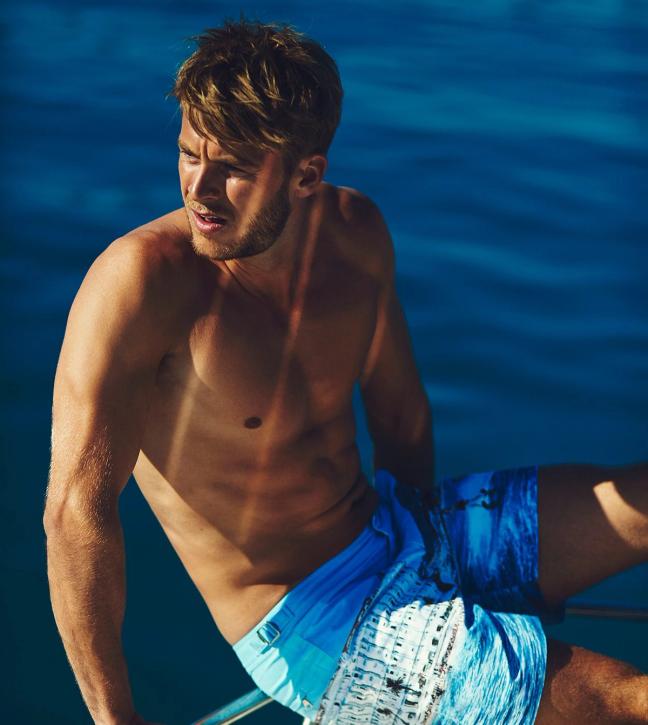
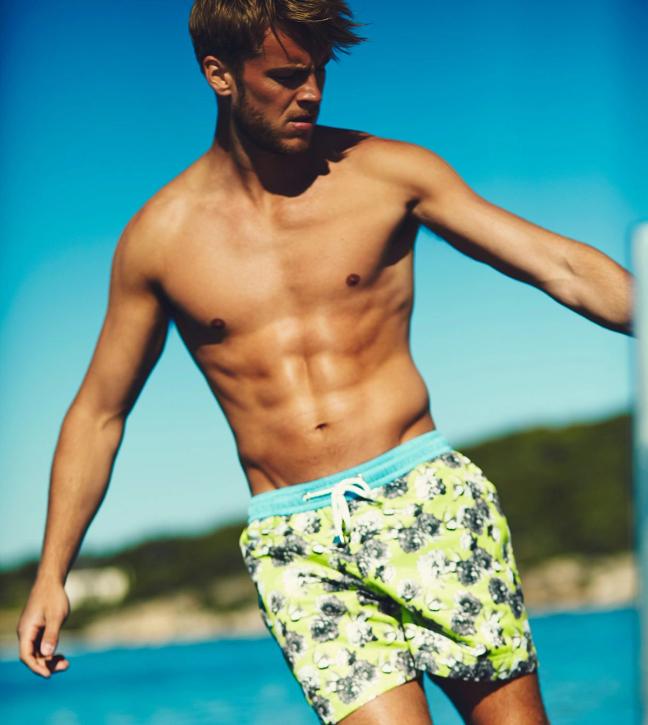
So why is there such an appetite for more tailored, more expensive shorts? Of course, that’s up for interpretation – but the fact that they have been designed to inspire confidence in the wearer is certainly up there. After all, with the launch of Instagram in 2010, many people’s holiday snaps are now posted for public consumption. The rise of the style and travel influencer, who promotes perfect versions of physiques and holidays directly onto our phones, has undoubtedly also had an impact. It feels like the pressure to look good even when you should be at your most relaxed has palpably increased – or at least, that you need to think a bit more about what you wear.
However, it’s also worth considering that, despite the breakdown of office dress codes to a certain extent over the past five years, holidays are one of the few times in a man’s uniformed lives when he can really express his personal style.
“When at work, men generally know how to dress because their go-to is the suit; a wardrobe staple for very many years,” says Dr Wild. “At play, the guidance for men is decidedly murky and this leaves more scope for them to choose, and to assert their personalities. I think this is where a desire to spend shrewdly and sizeably on leisure wear, including swimwear, appeals to men who are confident in their dress, or at least want to appear so.”
It’s no surprise that brands like Ripa Ripa, Arrells Barcelona, Love Brand, Hemingsworth, Dan Ward and Thalassophy, to name only a few, have joined Orlebar Brown as serious players charging serious prices on the world swimwear scene. All of these are united by similar characteristics: they invest in technically-suitable fabrics, they cut a slim silhouette and they make their shorts to be worn both in and out of the water.
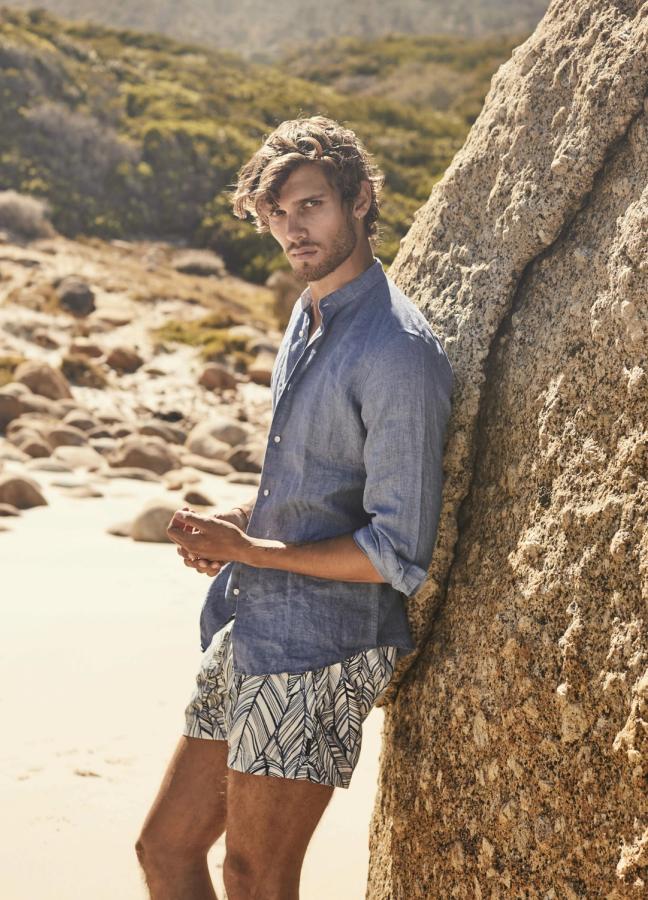
“We want to give our swim shorts as much attention as is typically reserved to suits and shirts,” says Anna Laura Hoefer, who founded Italian men’s swimwear label Ripa Ripa in 2014. “Each garment is entirely made in Italy with high quality materials, from a nautical rope manufacturer for the waist cord to an Apulian label factory. All our designs are drawn by us, this year even by hand, which gives them a unique touch.”
But if the willingness, or at least open-mindedness, of men to spending over one hundred pounds on a pair of shorts is the new normal, what’s the future?
Looking to the luxury industry more generally, you might assume that the only way is up. And to that end, there have been some pretty baller moves from swim brands over the past few years. In 2015, Vilebrequin introduced a pair of navy shorts with a lobster design sewn in gold thread with emeralds in the 18-karat gold lace tips priced at a reassuringly exclusive £9,400. More recently, streetwear superbrand Supreme teamed up with Speedo on a capsule collection for hydrocentric hypebeasts that includes a silicone swim cap and goggles.
While I’m not suggesting bonkers prices are set to become more prolific, these kind of items are more symptomatic of a trend towards exclusivity and uniqueness that’s increasingly demanded by a luxury customer – and this is already trickling into the swimwear market. Today it’s not unusual for dedicated swim brands to offer rare materials and personalisation for its styles. Orlebar Brown offers shorts that can be personalised with any picture you upload using its #snapshorts service. Arrells Barcelona produces limited-run prints in collaboration with cool artists such as Camille Walala and Jean Julian. Frescobol Carioca has crafted its own signature, bespoke jacquard fabric.
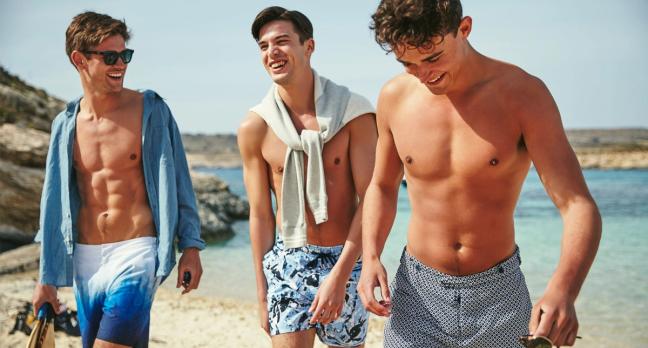
It’s also indicative of men increasingly interrogating the quality of products promoting themselves as “luxury”. As we lurch out of the pandemic, research already suggest younger customers are willing to spend more money on products, but will have fewer of them. Buy less, buy better is set to be the battlecry of a generation of customers, and despite high price tags, many high-end swim labels’ products offer this with a concentration of craftsmanship, investment in materials that dry quickly and won’t fade and perks such as free repairs or product guarantees.
However, the real tidal change in men’s swimwear will come from men re-thinking other aspects of their lives. First it was a changing mindset on how they presented themselves on holiday, now it’s reconsidering the ethics behind the holidays they take and the brands they wear.
“There has definitely been a huge shift in the market since we began, not just in men’s swim but in menswear more generally” says Harry Brantly, co-founder of Rio-inspired men’s swim label Frescobol Carioca. “Great style is now seen as an extension of a wider lifestyle rather than an indulgence.”
Unlike many other areas of the fashion industry, it’s noticeable that men’s swim brands feature their commitment to sustainability prominently when they’re communicating with potential customers. As we all become more aware of the environmental impact of travel, swimwear poses an interesting moral conundrum to both the wearer and the manufacturer. As a general rule, you have to get on a plane and inhabit a destination outside of your local area to wear them – and yet, we know this will have a negative impact on the planet in a variety of ways.

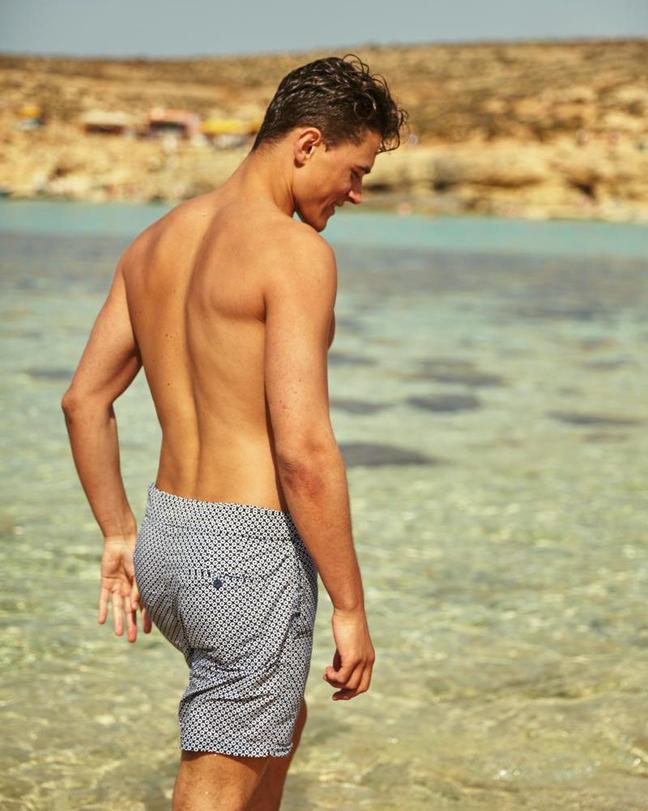
“Sustainability was definitely a travel buzzword in 2019. People were looking for that when planning their holidays,” says Emily Mathieson, travel journalist and founder of sustainable homeware store Aerende. “As consumers, we know that our consumption is not good for the planet and we want to feel better about it. All the private operators now say they offer the height of exclusivity, luxury and ‘treading lightly on the land’ – the language has shifted.”
In other words, being seen to be sustainable has become an integral part of the luxury travel experience – and swim brands have followed suit. Frescobol Carioca has an in-house team dedicated to developing and researching products and processes that are more environmentally conscious, as well as consulting with local authorities to try and ensure the brand’s sustainability status at the point of supply change. Thalossopy, founded last year by hair stylist Leigh Keates, makes 1950s-style Cabana sets with the swim shorts crafted from 100 per cent recycled ocean and landfill plastic. On a dedicated page on the website, the brand bullet points what it’s already doing (labels with washing guidelines that reduce microplastics, a discount on your next pair when you trade your old pair in, an added donation to charity when purchasing) as well as the environmental goal it’s trying to achieve (zips from recycled materials, eco dyes by 2022). This desire for a completely circular, closed loop business model – one that keeps reusing and recrafting existing items rather than creating wholly new ones – is becoming the aim for most swim brands right now. Case in point, Orlebar Brown.
“From February next year, all our products will be made from post-consumer industrial waste and come from sustainable sources,” says Brown. “We’ve introduced targets that mean we are hoping to be carbon neutral in three years. You will know the carbon footprint of all of our products via our website and we are also going to give customers the opportunity to offset that carbon if they wish. Do I believe we’ll be screaming about it? No. I just believe it’s best practice. It’s the right thing to do.”
In short, the result of the swim shorts revolution seems to be that our desire to look good on holiday has become inexorably intertwined with the idea of doing good on holiday – and the logical conclusion is that both of those things will define how men’s luxury swim shorts are made and marketed moving forward. Their sustainability is just as desirable as how you’ll look in them.
O Brothers where art thou? Charting the demise of Brooks Brothers…
Become a Gentleman’s Journal member. Find out more here.

Become a Gentleman’s Journal Member?
Like the Gentleman’s Journal? Why not join the Clubhouse, a special kind of private club where members receive offers and experiences from hand-picked, premium brands. You will also receive invites to exclusive events, the quarterly print magazine delivered directly to your door and your own membership card.
